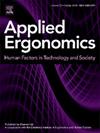情境对四种医院团队适应的影响:一项民族志研究
IF 3.1
2区 工程技术
Q2 ENGINEERING, INDUSTRIAL
引用次数: 0
摘要
医疗保健质量和安全工作越来越关注于了解复杂系统如何适应在中断期间维持运营。本文探讨了医院内部的团队适应,研究了不同类型的团队如何应对需求和能力之间的失调。目的探讨不同类型的团队是否会经历不同类型的需求能力失调,以及团队在如何适应方面是否以及如何不同。总体目标是确定不同类型的团队是否以及如何有不同的需求来支持他们的适应能力和系统弹性。方法:本研究采用人种学观察方法收集伦敦一家大型医院五个病房的数据:两个外科病房、一个老年人病房、一个重症监护病房和专门用于加快急诊科患者流量的急性评估病房(AAU)。使用医院团队的类型学和CARE模型2.0框架来分析错位和适应。结果所有类型的团队都经历过错位,但他们对错位的适应有所不同。团队设计、结构和成员影响适应策略。具有稳定成员的结构和卫星团队有更少的不一致和有效的协调适应。混合团队,既有稳定的成员,也有不稳定的成员,由于他们的相互作用分散,更容易受到伤害。协调团队,整合来自多个领域的代表,由于优先事项冲突和信息变化而面临挑战。结论不同医院团队对牙位失调的适应方式不同。团队特征影响适应策略。设计和支持适应性团队对于提高医疗保健质量和安全性至关重要。未来的研究应着眼于适应性团队合作,探索提高团队适应能力的干预措施。本文章由计算机程序翻译,如有差异,请以英文原文为准。
Contextual influences on adaptation in four types of hospital teams: An ethnographic study
Background
Healthcare quality and safety efforts increasingly focus on understanding how complex systems adapt to maintain operations during disruptions. This paper explores team adaptation within hospitals, examining how different types of teams respond to misalignments between demand and capacity.
Aim
To explore whether different types of teams experience different types of demand capacity misalignments, and whether and how teams differ in how they adapt. The overall goal was to identify whether and how different types of teams might have different requirements to support their adaptive capacity and system resilience.
Methods
This study used ethnographic observations to collect data from five wards in a large London hospital: two surgical wards, an older adult ward, a critical care unit, and the Acute Assessment Unit (AAU) specifically designed to expedite patient flow from the Emergency Department. A typology of hospital teams and the CARE Model 2.0 framework were used to analyse misalignments and adaptations.
Results
All team types experienced misalignments, but their adaptations in response to misalignments varied. Team design, structure, and membership influenced adaptation strategies. Structural and satellite teams, with stable membership, had fewer misalignments and coordinated adaptations effectively. Hybrid teams, with both stable and unstable members, were more vulnerable due to their fragmented interactions. Coordinating teams, integrating representatives from multiple areas, faced challenges due to conflicting priorities and information changes.
Conclusions
Different hospital teams adapt in different ways to misalignments. Team features influence adaptation strategies. Designing and supporting adaptive teams is crucial for improving healthcare quality and safety. Future research should focus on adaptive teamwork and explore interventions to enhance team adaptive capacity.
求助全文
通过发布文献求助,成功后即可免费获取论文全文。
去求助
来源期刊

Applied Ergonomics
工程技术-工程:工业
CiteScore
7.50
自引率
9.40%
发文量
248
审稿时长
53 days
期刊介绍:
Applied Ergonomics is aimed at ergonomists and all those interested in applying ergonomics/human factors in the design, planning and management of technical and social systems at work or leisure. Readership is truly international with subscribers in over 50 countries. Professionals for whom Applied Ergonomics is of interest include: ergonomists, designers, industrial engineers, health and safety specialists, systems engineers, design engineers, organizational psychologists, occupational health specialists and human-computer interaction specialists.
 求助内容:
求助内容: 应助结果提醒方式:
应助结果提醒方式:


